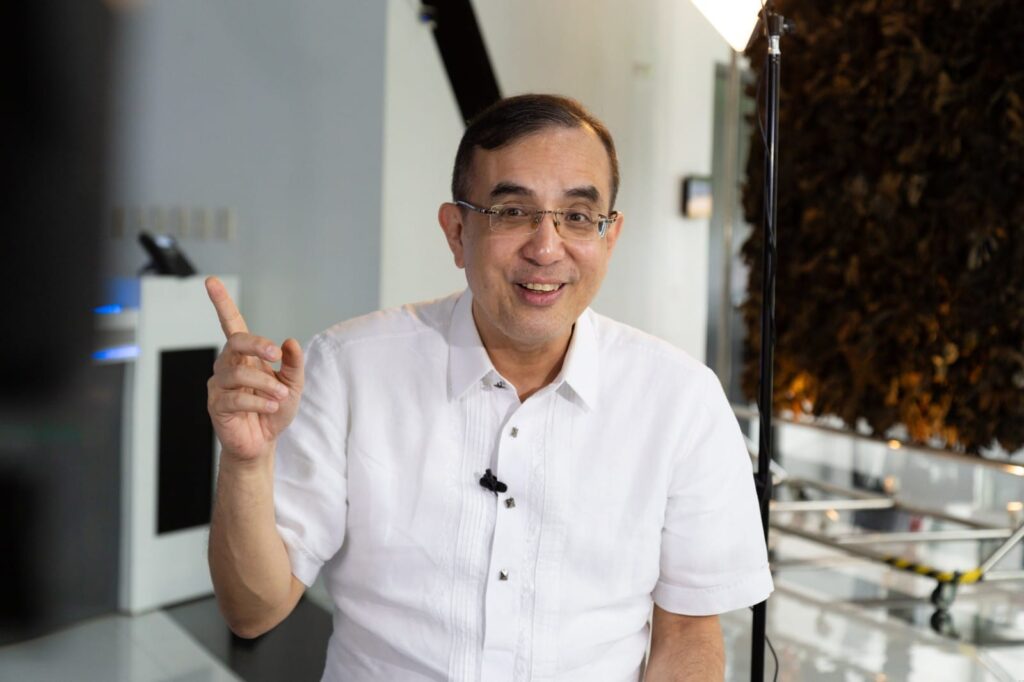Most Filipinos are sensitive to electricity prices as power uses fuel that the country largely imports, making it vulnerable to global price fluctuations.
Meralco, the country’s biggest power distributor, ensures customers’ monthly electricity bills do not become too much of a headache by keeping prices within reach of the public through strategic contracts with suppliers and a long-term program to shift to renewable, clean energy sources.
Joe Zaldarriaga, Meralco’s vice president and head for corporate communications, keeps electricity users apprised of the movement of monthly electricity bills and has taken the lead in explaining the power firm’s transition to sustainable energy.
Zaldarriaga, a familiar face on television from whom consumers get Meralco updates and energy conservation tips, takes on the job of defusing anxiety and anger when power rates increase through his assuring presence.
Lately, he debunked a long-held criticism of the Philippine power charges being excessive compared to other countries.
While the Philippines is an oil importer, Zaldarriaga said electricity prices are much more affordable than the rest of the world based on data from Australian-based market researcher International Energy Consultants or IEC. The IEC gathered data on energy prices in 2022 from 46 countries.
“The IEC study showed Meralco rates are fair and reasonable, and the myth that Philippine rates are the highest is completely unfounded,” Zaldarriaga said on the Daily Tribune’s show Business Sense with Komfie Manalo.
Zaldarriaga said Meralco’s average tariff in 2022 ranked 21st globally and was 3 percent below the international median cost.
Myth debunked
The IEC study showed Meralco rates are cheaper than those in Singapore and Japan which do not have power subsidies like the Philippines.
Zaldarriaga said the exclusion of subsidized markets further highlights Meralco’s more affordable rates.
“The IEC study added that if subsidized markets were excluded, Meralco distribution tariff would even be 13 percent lower than the world average,” he said.
Neighboring countries with over 50 percent power subsidies include Thailand, Indonesia, Malaysia, Korea, Taiwan and Vietnam.
Keeping it real
Zaldarriaga said the main contributors to intermittent price increases are generation fees on costlier imported and local fuels.
“Just like what we usually explain to our consumers monthly when we announce rate adjustments, the biggest contributor to a rate increase is a higher generation charge, which is a pass-through cost, meaning we only collect this, then we remit it to generation companies,” he explained.
Along with its non-subsidized power, Zaldarriaga said Meralco’s detailed electricity bill and regular announcements through various audio-visual channels reflect its goal for transparency.
“The absence of subsidies means that Filipinos are paying for the true cost of electricity — nothing more, nothing less. The IEC calculated the data using published rates from each market’s utility or supplier, and then checked it against actual customers’ bills to make sure it was accurate,” Zaldarriaga said.
Getting further to the core elements of power distribution with sincerity, he said subsidies under the Philippine context are not sustainable.
“Should a similar 50 percent subsidy be applied to Meralco’s average tariff, the IEC said it would require an estimated P241 billion in budgetary support,” Zaldarriaga shared.
Despite its non-subsidized electricity, he said Meralco has kept price increases at minimal levels.
“The IEC study said that despite this increase in generation charges, all of the components of the regulated tariff are judged fair and reasonable,” Zaldarriaga stressed.
“ Meralco’s tariff increase at 24 percent is about the same level of 23 percent increase over the past five years worldwide,” he added.
Navigating for cost efficiency
To ensure consumer prices are attainable, Zaldarriaga said Meralco partners with energy suppliers under carefully crafted terms.
“The main reason for this is the diligent contract management of Meralco. We can source low-cost power supply agreements with generation companies which enable charge at wholesale price, effectively, lower rates,” he said.
“This is the same as any retailer, even in every other industry. If your supply cost is low, then your prices are competitive,” Zaldarriaga continued.
The IEC study showed Meralco’s distribution rates were also 33 percent lower than the average due to its business strategies.
Green transition
The World Economic Forum says carbon emissions from traditional power sources, such as coal plants, could increase by over 4 percent each year, threatening extreme floods, drought and wildfires due to climate change.
According to the Philippine-based Institute for Climate and Sustainable Cities, the Philippines imports up to 75 percent of coal mostly from Indonesia.
Meanwhile, Climate Trace, a not-for-profit group that uses satellites to monitor the atmosphere, warns global carbon emissions could be three times higher than widely reported by companies as demand for energy increases along with the global population.
Zaldarriaga, however, said his Meralco team has been doing its part to ensure the environment and the people are protected from the effects of ecological upheaval through the firm’s efforts to shift to renewable energy.
“Meralco recently stated that we will cut direct emissions by at least 23 percent through 2030 in line with the government’s goal to become coal-free before 2050,” he said.
With the help of its supplier MPower, Meralco has been exploring renewables to expand its renewable energy or RE to 22 percent of its portfolio within this decade.
Zaldarriaga added Meralco is targeting to distribute 18 percent RE to households by 2025.
He shared that Meralco already surpassed its initial RE capacity target of 1,500 megawatts with 1,880 MW of contracted capacity from various suppliers.
“This is in support of the Department of Energy’s Renewable Portfolio Standards policy. Meralco continuously invests in the expansion and upgrading of facilities to ensure the delivery of safe, stable, and reliable electricity service to our 7.8 million customers,” Zaldarriaga said.
